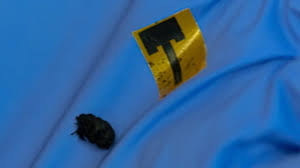
Breaking News
 Stablecoins Could Increase Treasury Demand, but Only by Reducing Demand for Other Assets
Stablecoins Could Increase Treasury Demand, but Only by Reducing Demand for Other Assets
 $150 CNC Plasma Table Build for Your Garage Easy Quick and Very Cost Effective
$150 CNC Plasma Table Build for Your Garage Easy Quick and Very Cost Effective
 BLUETTI Na SODIUM ION Battery Power Station | Did They Just KILL Lithium?
BLUETTI Na SODIUM ION Battery Power Station | Did They Just KILL Lithium?
 Vitamin Toxicity and Toxic Bile Theory featuring Dr Garrett Smith
Vitamin Toxicity and Toxic Bile Theory featuring Dr Garrett Smith
Top Tech News
 3D Printed Aluminum Alloy Sets Strength Record on Path to Lighter Aircraft Systems
3D Printed Aluminum Alloy Sets Strength Record on Path to Lighter Aircraft Systems
 Big Brother just got an upgrade.
Big Brother just got an upgrade.
SEMI-NEWS/SEMI-SATIRE: October 12, 2025 Edition
 Stem Cell Breakthrough for People with Parkinson's
Stem Cell Breakthrough for People with Parkinson's
 Linux Will Work For You. Time to Dump Windows 10. And Don't Bother with Windows 11
Linux Will Work For You. Time to Dump Windows 10. And Don't Bother with Windows 11
 XAI Using $18 Billion to Get 300,000 More Nvidia B200 Chips
XAI Using $18 Billion to Get 300,000 More Nvidia B200 Chips
 Immortal Monkeys? Not Quite, But Scientists Just Reversed Aging With 'Super' Stem Cells
Immortal Monkeys? Not Quite, But Scientists Just Reversed Aging With 'Super' Stem Cells
 ICE To Buy Tool That Tracks Locations Of Hundreds Of Millions Of Phones Every Day
ICE To Buy Tool That Tracks Locations Of Hundreds Of Millions Of Phones Every Day
 Yixiang 16kWh Battery For $1,920!? New Design!
Yixiang 16kWh Battery For $1,920!? New Design!
 Find a COMPATIBLE Linux Computer for $200+: Roadmap to Linux. Part 1
Find a COMPATIBLE Linux Computer for $200+: Roadmap to Linux. Part 1
Carbon Nanotube Thin Film Patch Antennas Viable for 5G, Drones, Sensors and IOT

The new antennas could be suitable for 5G networks but also for aircraft, especially unmanned aerial vehicles, for which weight is a consideration; as wireless telemetry portals for downhole oil and gas exploration; and for future "internet of things" applications.
The Rice lab of chemical and biomolecular engineer Matteo Pasquali tested antennas made of "shear-aligned" nanotube films. The researchers discovered that not only were the conductive films able to match the performance of commonly used copper films, they could also be made thinner to better handle higher frequencies.
At the target frequencies of 5, 10 and 14 gigahertz, the antennas easily held their own with their metal counterparts, he said. "We were going up to frequencies that aren't even used in Wi-Fi and Bluetooth networks today, but will be used in the upcoming 5G generation of antennas," he said.
recent improvements in fluid phase CNT processing have yielded macroscopic CNT materials with better alignment and conductivity that can match copper. Early work on carbon nanotube (CNT) antennas indicated that their performance could not match that of metals such as copper. There is currently a gap in the literature on CNT antennas for direct experimental measurements of radiation efficiency. In this study, we conducted radiation efficiency measurements of microstrip patch antennas made of shear-aligned CNT films.



